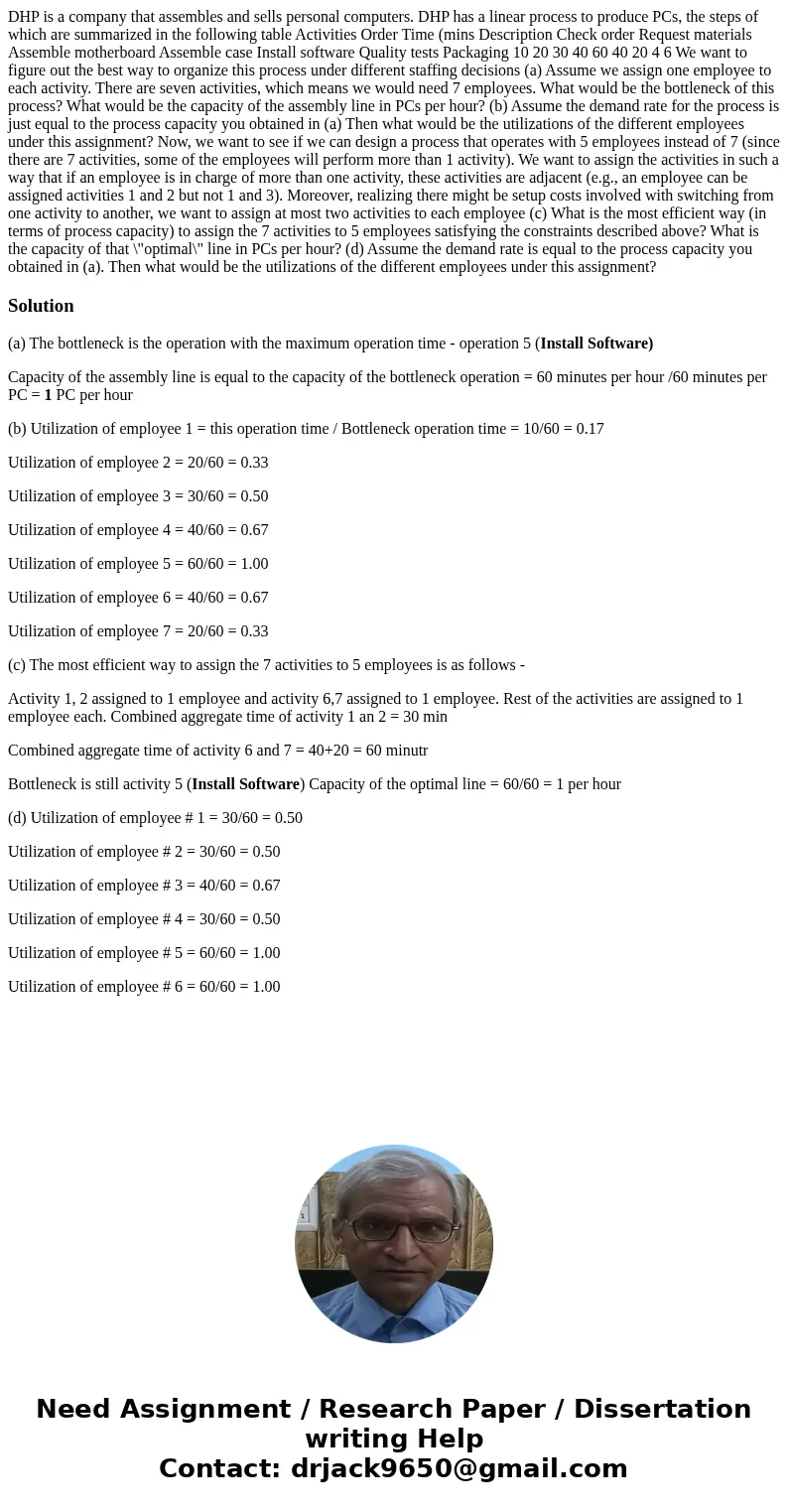DHP is a company that assembles and sells personal computers. DHP has a linear process to produce PCs, the steps of which are summarized in the following table Activities Order Time (mins Description Check order Request materials Assemble motherboard Assemble case Install software Quality tests Packaging 10 20 30 40 60 40 20 4 6 We want to figure out the best way to organize this process under different staffing decisions (a) Assume we assign one employee to each activity. There are seven activities, which means we would need 7 employees. What would be the bottleneck of this process? What would be the capacity of the assembly line in PCs per hour? (b) Assume the demand rate for the process is just equal to the process capacity you obtained in (a) Then what would be the utilizations of the different employees under this assignment? Now, we want to see if we can design a process that operates with 5 employees instead of 7 (since there are 7 activities, some of the employees will perform more than 1 activity). We want to assign the activities in such a way that if an employee is in charge of more than one activity, these activities are adjacent (e.g., an employee can be assigned activities 1 and 2 but not 1 and 3). Moreover, realizing there might be setup costs involved with switching from one activity to another, we want to assign at most two activities to each employee (c) What is the most efficient way (in terms of process capacity) to assign the 7 activities to 5 employees satisfying the constraints described above? What is the capacity of that \"optimal\" line in PCs per hour? (d) Assume the demand rate is equal to the process capacity you obtained in (a). Then what would be the utilizations of the different employees under this assignment?
(a) The bottleneck is the operation with the maximum operation time - operation 5 (Install Software)
Capacity of the assembly line is equal to the capacity of the bottleneck operation = 60 minutes per hour /60 minutes per PC = 1 PC per hour
(b) Utilization of employee 1 = this operation time / Bottleneck operation time = 10/60 = 0.17
Utilization of employee 2 = 20/60 = 0.33
Utilization of employee 3 = 30/60 = 0.50
Utilization of employee 4 = 40/60 = 0.67
Utilization of employee 5 = 60/60 = 1.00
Utilization of employee 6 = 40/60 = 0.67
Utilization of employee 7 = 20/60 = 0.33
(c) The most efficient way to assign the 7 activities to 5 employees is as follows -
Activity 1, 2 assigned to 1 employee and activity 6,7 assigned to 1 employee. Rest of the activities are assigned to 1 employee each. Combined aggregate time of activity 1 an 2 = 30 min
Combined aggregate time of activity 6 and 7 = 40+20 = 60 minutr
Bottleneck is still activity 5 (Install Software) Capacity of the optimal line = 60/60 = 1 per hour
(d) Utilization of employee # 1 = 30/60 = 0.50
Utilization of employee # 2 = 30/60 = 0.50
Utilization of employee # 3 = 40/60 = 0.67
Utilization of employee # 4 = 30/60 = 0.50
Utilization of employee # 5 = 60/60 = 1.00
Utilization of employee # 6 = 60/60 = 1.00

 Homework Sourse
Homework Sourse